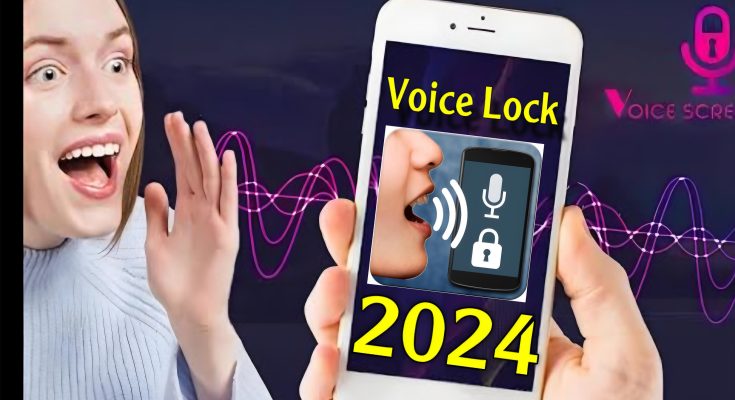Introduction
Voice Locker for Mobile: Enhancing Security Vocal Biometrics 2024 : Improving Security with Vocal Biometrics in 2024. Mobile devices play a crucial role in our everyday lives in the current era of technology, as they store important personal and professional data. Conventional security measures like passwords, PINs, and pattern locks are no longer sufficient to protect against advanced cyber attacks. Emerging as an innovative option, voice locker technology utilizes the distinct characteristics of an individual’s speech for verification. This article delves into the technology of voice lockers, examining its advantages, underlying mechanisms, difficulties, and future possibilities.
Analyzing the Functionality of Voice Locker in Mobile Technology
Voice locker technology utilizes voice biometrics for user verification. Every individual’s voice has unique attributes that are shaped by physiological and behavioral elements, including the structure of their vocal tract, pitch, tone, and speaking habits. Due to their complexity, these traits are hard to duplicate, therefore making speech recognition a very effective security precaution.
The procedure starts with an initial step of registration, during which the user’s voice is captured while uttering certain phrases or words. Subsequently, the recording undergoes processing to provide a distinctive voiceprint, which is a digital representation of the person’s vocal characteristics. When the user attempts to unlock the device, their real-time vocal input is compared to the saved voiceprint. Access is authorized only if there is a correspondence.
Benefits of Voice Locker Technology
1. Heightened Security:
Voice lockers provide superior degrees of security compared to conventional techniques. Replicating someone’s voice with sufficient precision to circumvent the system is very arduous, making illegal access arduous.
2. Ease of use:
Voice recognition obviates the need of remembering and inputting passwords or PINs. Users may effortlessly unlock their devices by using voice commands, resulting in a smooth and user-friendly experience.
3. Automatic operation without the need for human intervention:
Voice lockers provide touchless unlocking, making them especially advantageous in scenarios when typing is impractical or unfeasible, such as while operating a vehicle or manipulating items.
4. Decreased likelihood of shoulder surfing:
Compared to PINs and patterns, which are susceptible to observation, speech recognition is far more difficult to intercept and replicate, hence minimizing the potential for unlawful entry.
5. Implementation of Multi-Factor Authentication:
By integrating voice lockers with other biometric techniques like face recognition or fingerprint scanning, a multi-tiered security system may be established, greatly augmenting the overall security of the device.
The Mechanism Behind Voice Lockers
Voice locker systems use advanced algorithms and machine learning models to analyze and authenticate voice patterns. Essential technical elements comprise:
1. Processing of signals:
The user’s vocal input is recorded and transformed into a digital signal. Signal processing methods are used to extract distinctive characteristics like as pitch, timbre, and formants, which are crucial for generating a distinct voiceprint.
2. Extraction of Features:
State-of-the-art algorithms use advanced techniques to detect distinct attributes from the speech signal, examining several parameters like frequency, duration, and amplitude in order to construct a full voice profile.
3. Matching patterns:
During the process of authentication, the real-time speech input is matched to the recorded voiceprint using pattern matching algorithms. These algorithms evaluate the resemblance between the two speech samples in order to ascertain whether they are a match.
4. Artificial Intelligence:
Machine learning models are built using extensive datasets to enhance the precision and dependability of speech recognition. These models possess the ability to constantly acquire knowledge and adjust to changes in the user’s voice resulting from variables such as the natural process of aging or mild diseases.
Obstacles and Constraints
Although voice locker technology has several benefits, it also encounters certain obstacles:
1. Environmental factors such as ambient noise, subpar microphone quality, and inconsistent acoustics may impact the precision of speech recognition systems. Maintaining constant performance in various situations continues to be a technological issue.
2. Health-related variations: Transient alterations in a user’s vocal characteristics caused by ailments such as colds or sore throats might adversely affect the system’s capacity to properly identify the voice. This has the ability to prevent consumers from using their gadgets when they need to do so urgently.
3. Security Concerns: While challenging, it is not beyond the realm of possibility for skilled attackers to duplicate a user’s voice utilizing top-notch recordings or powerful speech synthesis technologies. It is essential to provide resilience against such assaults.
4. Privacy Concerns: The storage of voiceprints entails the management of delicate biometric information. It is of utmost importance to prioritize the secure storage and ethical use of this data in order to safeguard user privacy.
Prospects for the future
The future of speech biometric technology seems to be optimistic, since continuous advances are expected to tackle existing constraints and improve its functionalities.
1. Enhanced Noise Reduction: Advanced signal processing methods and machine learning models are being developed to enhance the accuracy of speech recognition in contexts with high levels of noise.
2. Future systems are expected to include adaptive algorithms that can adapt to changes in a user’s speech over time, ensuring consistent high accuracy even as the voice varies.
3. AI Integration: Incorporating artificial intelligence may facilitate the development of advanced speech recognition systems that possess the ability to comprehend context and purpose, hence augmenting security measures and improving user experience.
4. Expanding Applications: Voice locker technology has the potential to be used in a wider range of products and services, including as smart homes, autos, and financial transactions, to provide a smooth and secure user environment.
In conclusion,
Voice locker technology is a notable improvement in mobile security, providing a unique combination of simplicity and strength. Despite the existence of obstacles, continuous research and development efforts have the potential to improve and strengthen this technology, making it a feasible choice for protecting not just mobile devices but also a diverse range of applications in the future. As our dependence on mobile technology grows, the use of voice lockers will become more important in protecting our digital identities and personal information.




One Comment on “Voice Locker for Mobile: Enhancing Security Vocal Biometrics 2024”
Comments are closed.